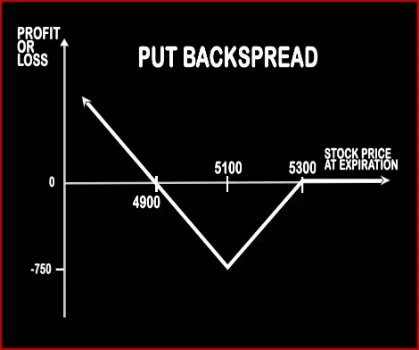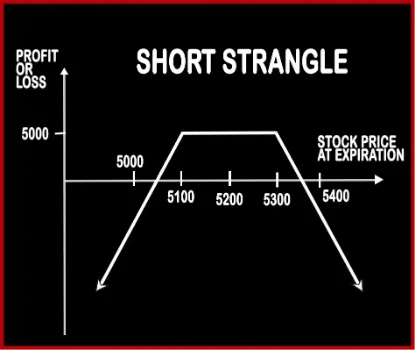Compare Strategies
| PUT BACKSPREAD | SHORT STRANGLE | |
|---|---|---|

|

|
|
| About Strategy |
Put Backspread Option StrategyIf the trader is bearish on market and bullish in volatility, he will implement this strategy. However the trader can be neutral in nature i.e. indifferent if the market moves in either of the direction, this strategy will make profits, but uptrend will give a capped income than downtrend which will give unlimited returns. |
Short Strangle Option StrategyThis strategy is similar to Short Straddle; the only difference is of the strike prices at which the positions are built. Short Strangle involves selling of one OTM Call Option and selling of one OTM Put Option, of the same expiry date and same underlying asset. Here the probability of making profits is more as there is a spread between the two strike prices, and if .. |
PUT BACKSPREAD Vs SHORT STRANGLE - Details
| PUT BACKSPREAD | SHORT STRANGLE | |
|---|---|---|
| Market View | Bearish | Neutral |
| Type (CE/PE) | PE (Put Option) | CE (Call Option) + PE (Put Option) |
| Number Of Positions | 2 | 2 |
| Strategy Level | Advance | Advance |
| Reward Profile | Limited | |
| Risk Profile | Unlimited | |
| Breakeven Point | Lower Break-even = Strike Price of Put - Net Premium, Upper Break-even = Strike Price of Call+ Net Premium |
PUT BACKSPREAD Vs SHORT STRANGLE - When & How to use ?
| PUT BACKSPREAD | SHORT STRANGLE | |
|---|---|---|
| Market View | Bearish | Neutral |
| When to use? | This strategy is perfect in a neutral market scenario when the underlying is expected to be less volatile. | |
| Action | Sell OTM Call, Sell OTM Put | |
| Breakeven Point | Lower Break-even = Strike Price of Put - Net Premium, Upper Break-even = Strike Price of Call+ Net Premium |
PUT BACKSPREAD Vs SHORT STRANGLE - Risk & Reward
| PUT BACKSPREAD | SHORT STRANGLE | |
|---|---|---|
| Maximum Profit Scenario | Maximum Profit = Net Premium Received | |
| Maximum Loss Scenario | Loss = Price of Underlying - Strike Price of Short Call - Net Premium Received | |
| Risk | Limited | Unlimited |
| Reward | Unlimited | Limited |
PUT BACKSPREAD Vs SHORT STRANGLE - Strategy Pros & Cons
| PUT BACKSPREAD | SHORT STRANGLE | |
|---|---|---|
| Similar Strategies | Short Straddle, Long Strangle | |
| Disadvantage | • Unlimited loss is associated with this strategy, not recommended for beginners. • Limited reward amount. | |
| Advantages | • Higher chance of profitability due to selling of OTM options. • Advantage from double time decay and a contraction in volatility. • Traders can book profit when underlying asset stays within a tight trading range. |